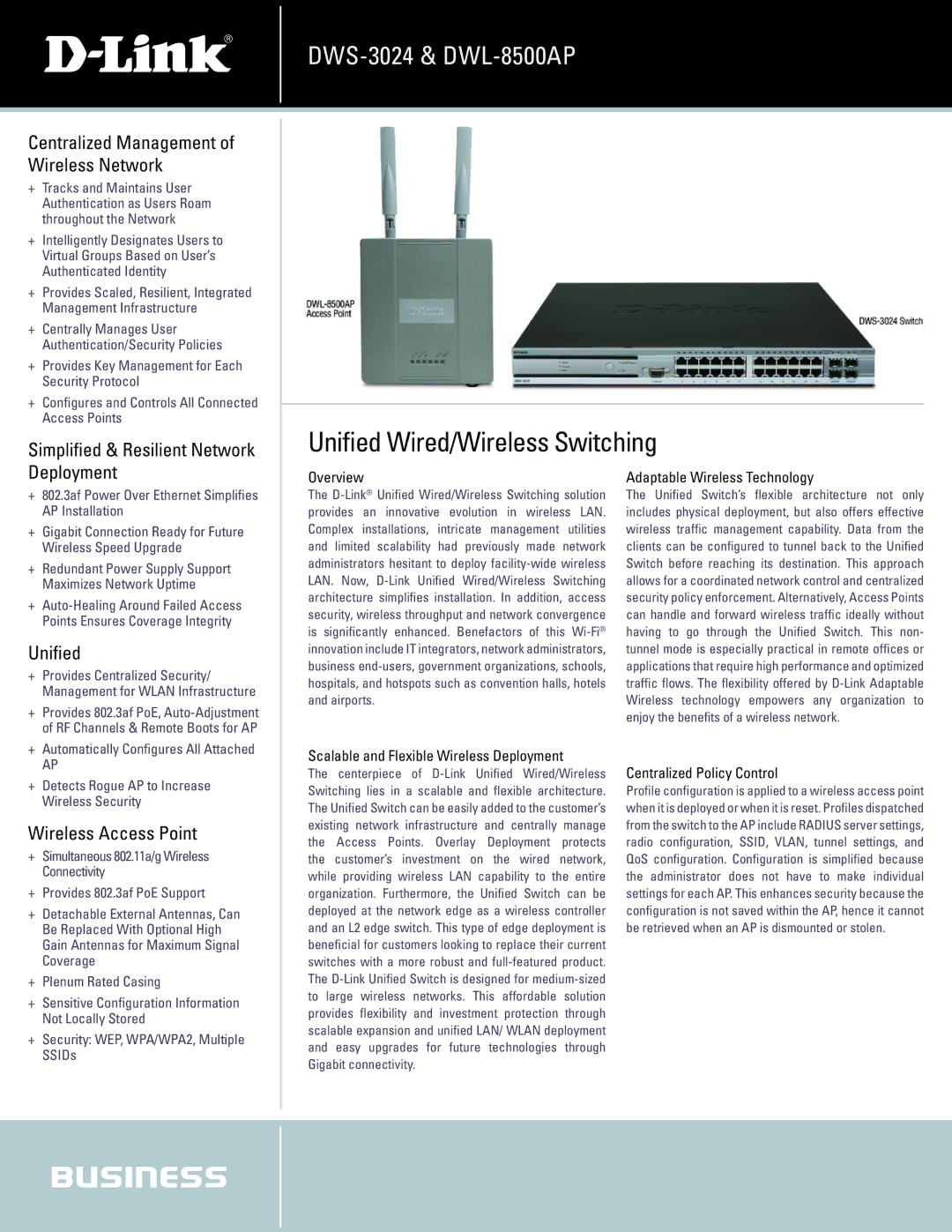
Centralized Management of Wireless Network
+Tracks and Maintains User Authentication as Users Roam throughout the Network
+Intelligently Designates Users to Virtual Groups Based on User’s Authenticated Identity
+Provides Scaled, Resilient, Integrated Management Infrastructure
+Centrally Manages User Authentication/Security Policies
+Provides Key Management for Each Security Protocol
+Configures and Controls All Connected Access Points
Simplified & Resilient Network
Unified Wired/Wireless Switching
Deployment
+802.3af Power Over Ethernet Simplifies AP Installation
+Gigabit Connection Ready for Future Wireless Speed Upgrade
+Redundant Power Supply Support Maximizes Network Uptime
+
Unified
+ | Provides Centralized Security/ |
| Management for WLAN Infrastructure |
+ | Provides 802.3af PoE, |
| of RF Channels & Remote Boots for AP |
Overview
The
Adaptable Wireless Technology
The Unified Switch’s flexible architecture not only includes physical deployment, but also offers effective wireless traffic management capability. Data from the clients can be configured to tunnel back to the Unified Switch before reaching its destination. This approach allows for a coordinated network control and centralized security policy enforcement. Alternatively, Access Points can handle and forward wireless traffic ideally without having to go through the Unified Switch. This non- tunnel mode is especially practical in remote offices or applications that require high performance and optimized traffic flows. The flexibility offered by
+ | Automatically Configures All Attached |
| AP |
+ | Detects Rogue AP to Increase |
| Wireless Security |
Wireless Access Point
+Simultaneous 802.11a/g Wireless Connectivity
+Provides 802.3af PoE Support
+Detachable External Antennas, Can Be Replaced With Optional High Gain Antennas for Maximum Signal Coverage
+Plenum Rated Casing
+Sensitive Configuration Information Not Locally Stored
+Security: WEP, WPA/WPA2, Multiple SSIDs
Scalable and Flexible Wireless Deployment
The centerpiece of
Centralized Policy Control
Profile configuration is applied to a wireless access point when it is deployed or when it is reset. Profiles dispatched from the switch to the AP include RADIUS server settings, radio configuration, SSID, VLAN, tunnel settings, and QoS configuration. Configuration is simplified because the administrator does not have to make individual settings for each AP. This enhances security because the configuration is not saved within the AP, hence it cannot be retrieved when an AP is dismounted or stolen.
